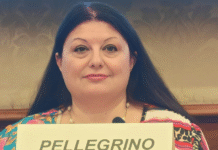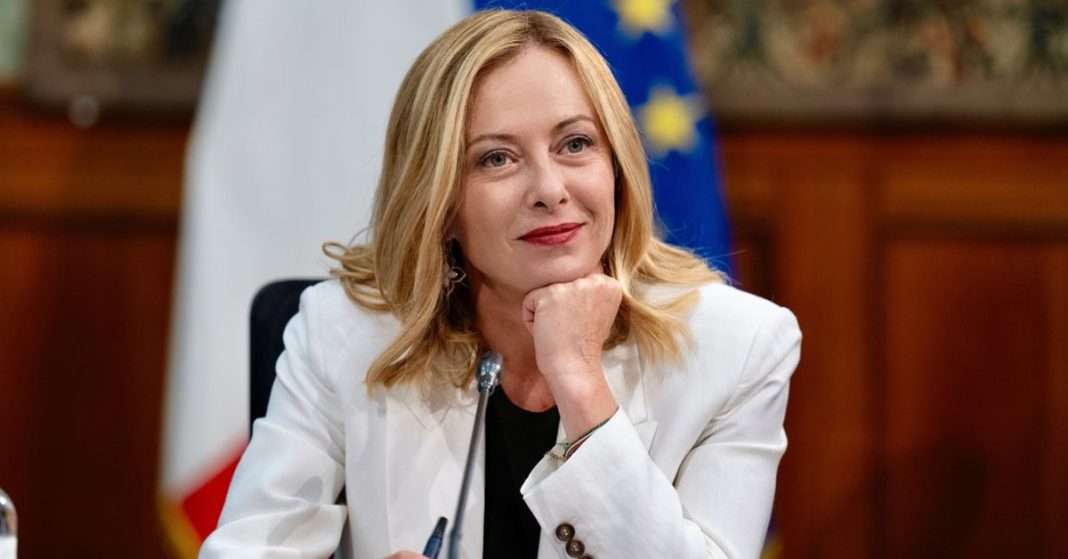Two years of the Meloni government. The first two years of an executive that is compact, stable, swift and effective and that is therefore going to remain in office at least until the end of its term. She, Giorgia Meloni, managed to take an entire nation into her own hands, winning the elections in September 2022 and becoming premier at the head of the centre-right coalition on 22 October, precisely two years ago. And if for many winning the elections and becoming head of government is the beginning of the end, Fratelli d’Italia has shown that it can withstand the shock of often having to make unpopular choices due to a budget constraint imposed by public debt and European return policies. But Giorgia Meloni’s strength seems to be the authoritativeness with which she addresses the citizens and with which her party and the centre-right coalition have drawn up the electoral programme that has convinced the Italians: a responsibility with which long-term results have been preferred to those of easy consensus but short-term. This, then, is one of the main factors: not making excellent promises, but making credible promises. And above all, keeping one’s word, a fact that distinguishes this government from all its predecessors. A credibility that has allowed the executive to be appreciated not only at home, but also internationally: the Meloni government is one of the most listened to and authoritative executives in Europe and enjoys the all-round support of its partners, regardless of ideological and political distances.
Economic results
Among the results that make the centre-right coalition most proud is certainly the increase in jobs. In just two years of work, the government managed to revive the labour market, even after a complex period: the effects of the pandemic were still being felt and Italy had just come out of the season of the Citizenship Income, which had slowed down demand and discouraged supply. It was precisely through the elimination of the Income and the introduction of incentives for permanent hiring such as the decontribution and the 120% super-dedication that employment rose by 830,000, an all-time record, the employment rate to 62.3% and the unemployment rate to 6.2%, the lowest since 2007. At the same time, precariousness fell, with stable contracts up by 800,000 and youth unemployment down to 18%. The world of women has also had its redemption: the female employment rate has risen to 53% with 10 million employed women. Various measures have come to their aid, including against gender violence: the anti-violence plan has increased by EUR 20 billion, while EUR 10 million has been invested in the freedom income, which has become structural. These results have also been achieved thanks to the many measures of the executive in favour of families and the birth rate, which allow women to no longer have to choose between work and parenthood: the single allowance has increased by an average of EUR 719, parental leave has increased, as has the nursery bonus.
If workers are growing, the economy is also doing better. GDP is back above the levels of 2008, before the Great Depression in the West, and is travelling at a higher rate than the European average, the spread has been nosediving for months at around 120 points, down 100 points since 2022, the Milan Stock Exchange was a record in 2023, the best in Europe and among the best performing in the world. Government bonds sold like hot cakes, testifying to investors’ confidence in the Italian government. Among these, the growth of the slice of debt in the hands of Italians should be noted: as much as EUR 425 billion was bought by households. In Italy’s growth, a fundamental role has been played by the South, whose GDP is growing above the national average, as is employment. Thus, among other things, Decontribuzione Sud, the incentive plan dedicated to the South reconfirmed by the government, works. A South that is a leader in exports: in 2023 exports were 14.2%, a fundamental part of that growth that has allowed the entire nation to become fourth in the world for exports, finally overtaking giants such as South Korea and Japan. A demonstration also of that desire for Italy that is growing stronger and stronger in the world. As mentioned, the South revives the entire nation, it is no longer the tail end but the ‘locomotive of Italy‘. Therefore, the resources reserved by the European Cohesion policies, whose management has positively undergone the change of pace imposed by the executive, with an efficiency in the use of funds that has also won the praise of the world’s major financial newspapers, are also on the mark.
International authority
Italy, as has been said, is once again a protagonist in the world thanks to a government that knows how to clearly show which side it is on: right from the start Giorgia Meloni has had the strength, by no means taken for granted, to widely confirm herself as a protagonist of the European Union and NATO, alongside Ukraine, fighting to bring Europe back to being a fundamental part of the Atlantic Alliance, an indispensable element for international politics and not just as a bureaucratic giant that harasses citizens. Italy has also begun a dialogue with other international players, such as China, Indo-Pacific countries, Latin America, the Balkans, the Mediterranean and especially Africa. The Mattei Plan has attracted the attention of many countries, with its 5.5 billion initial budget and the creation of new financial instruments to involve new actors and attract new investments. An issue, that of the African question, which was also included within the G7, which this year was under the Italian presidency: among the new topics addressed, there is also that of artificial intelligence, with the intervention of the Pope, for the first time in history present at the work of the summit. But also the fight against illegal immigration, on which the government is moving well, as the data show: landings have dropped by 61% in one year and by 30% compared to 2022, with repatriations up 16% compared to 2023 and 34% on 2022. The agreements with transit countries, the cooperation agreements, the expansion of the list of safe countries, the fight against smugglers, and now also the Italy-Albania protocol are working.
Fighting the mafias, health, Pnrr, school
And more safety on the streets, new hires for the police force and fire brigade, emergency room garrisons, a stop to rave parties, anti-poaching measures and the fight against squatting. The fight against the Mafia, with more than two thousand arrests including many excellent ones, confiscation of assets and prosecution ex officio for crimes aggravated by the Mafia method. The example of Caivano, reborn from its ashes thanks to the decree against juvenile crime, investments in the regeneration of the former Dolphinia swimming pool, the construction of a university campus, a new nursery school and a new cultural centre.
Then the major reforms, the premierate reform that is in the process of being approved, the law on differentiated autonomy, or the justice reform, which is already shaking up the status quo of certain judiciary: also thanks to this, the duration of civil trials has dropped by 141 days, while that of criminal trials has dropped by 208 days. And then there is the tax reform, with records from the recovery of tax evasion and tax revenues on the rise despite the fact that there has been no increase in taxes: the Irpef rates have been reduced from 4 to 3, the tax wedge has been reduced for the less well-off. Purchasing power was defended against a very pressing but now falling inflation, among the lowest in Europe. Workers were also supported by the new formula of the Inclusion Allowance that replaces the old Citizenship Income, the revaluation of pensions, and the de-taxation of performance bonuses. Support for those who produce and those who create wealth, against those who still want to impose wealth taxes: investment in development contracts, investment plans such as the Made in Italy Fund, raising the access threshold for the flat-rate scheme, combating unfair competition from ‘open and close’ companies, and the creation of the two-year arrangement with creditors.
Health care has reached its highest allocation ever, EUR 140 billion by 2026 against EUR 40 billion cut in 10 years under centre-left governments. In addition, the government has always supported agriculture, obtaining the revision of the CAP in Europe, support for farmers against the drift of the Green Deal and with 10 billion invested in agriculture and fishing. Italy also holds the record on the NRP, with 85% of measures activated, first in terms of objectives achieved and resources received, 113 billion, well over half of the funds allocated. Tourism is growing at excellent levels, investments for the ecological transition, making territories such as Emilia-Romagna, Tuscany, Marche, and the Campi Flegrei safe. The reconstruction and the funds against school drop-outs and for the university, the resources for civil service and sport, which entered into the Constitution, the 8 billion for the renewal of public contracts and the reduction in the average duration of competitions, from 780 to 180 days. In short, two years of changes, reforms and radical steps forward. This is not the end of the story: there is still much to be done to restore a nation that has been governed for too many years by those who have chosen to put party interests first rather than those of the Italians. Since 22 October 2022, the change of pace has been evident and this albeit brief list of achievements proves it.






























